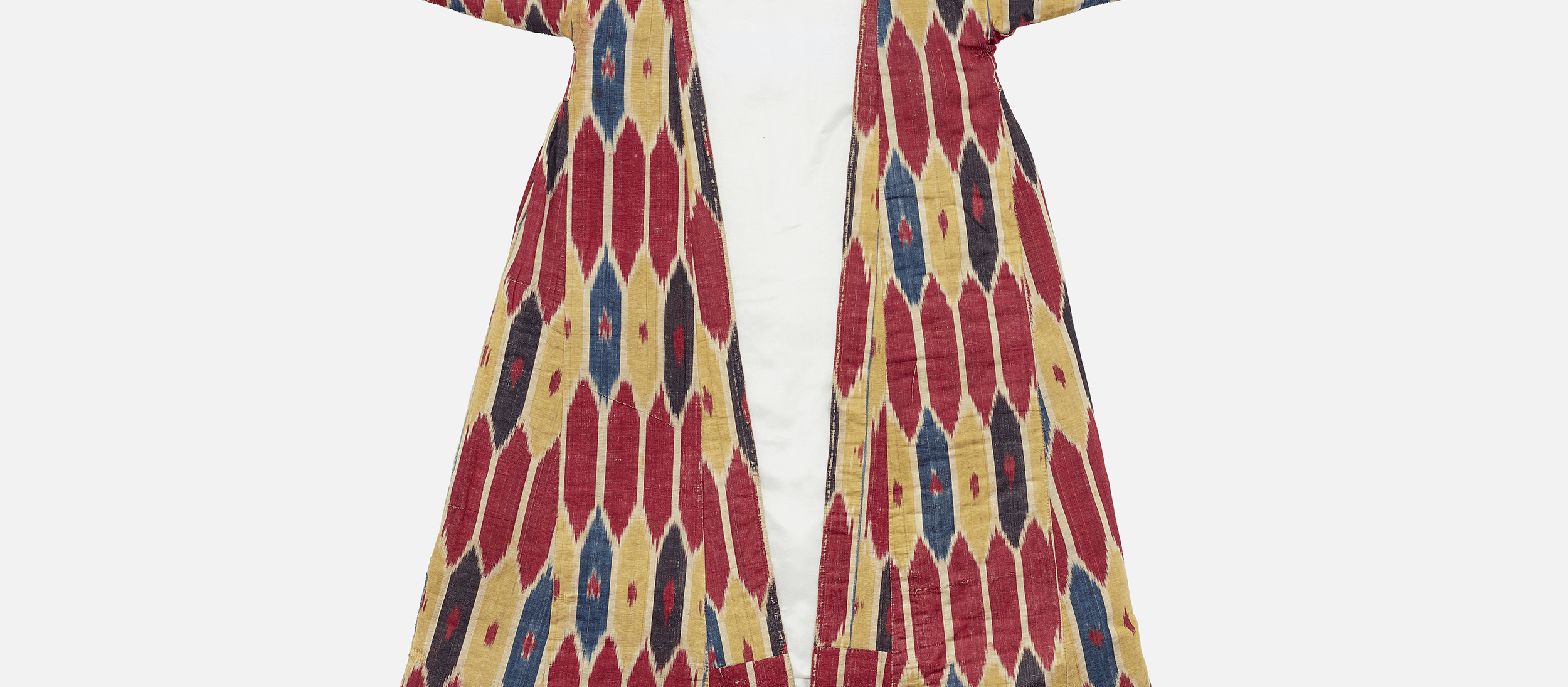Smithsonian’s Freer|Sackler Weaves Together Traditional and Contemporary Fashion
“To Dye For: Ikats from Central Asia,” will be on view at the Smithsonian’s Arthur M. Sackler Gallery March 24–July 29. Traditional 19-century ikat coats and panels from the Sackler’s collections, a gift of Guido Goldman, encourage visitors to explore the techniques and traditions that produced the Central Asian textiles. Alongside these historical objects are a number of Oscar de la Renta (1932–2014) garments on loan from the Collection of Annette de la Renta and the Oscar de la Renta Collection.
The process of creating ikats involved collaboration among different communities. Bundles of threads are patterned by repeated binding and resist dyeing before being woven into narrow strips and immersed into sequential vats of color. In multi-ethnic 19-century Central Asia, each “group” played a different role in the process. The Jews were responsible for importing and dying indigo, while the Tajiks were in charge of the yellow-and red-dye. The Uzbeks served as the weavers, who turned the brightly colored threads into the textiles seen in the exhibition.
The finished ikats are more than ornate fabrics. Transformed into brightly colored panels or sumptuous robes for men and women, they are works of art. The panels or curtains added colorful accents to the mud-brick architecture of Central Asia, while the coats were striking statement items that adorned wealthy men and women. Worn on special occasions as status symbols, they functioned in the same way as many of de la Renta-designer garments do today.
Drawn to the vibrant colors and bold designs of Central Asian ikat in 1997, the Dominican American de la Renta incorporated ikat motifs into his haute couture gowns, which he created for Pierre Balmain, the celebrated French designer. After 2005, de la Renta used ikat-inspired patterns in his own collections and was soon followed by other American designers. Today, the distinct ikat motifs appear in collections ranging from high fashion to jeans, from pillows and rugs to wallpaper and stationery. In turn, international interest in ikats stimulated the revival of this traditional technique in present-day Uzbekistan.
“These vibrant and highly original Central Asian ikat designs are found everywhere but few are aware of their origin and history,” said Massumeh Farhad, chief curator and Ebrahimi Family Curator of Persian, Turkish and Arab Art.
The textiles will be accompanied by a slideshow of images that will give viewers insight to the environment and times that fostered the creation of the historic objects.
About the Freer|Sackler
The Smithsonian’s Freer Gallery of Art and the adjacent Arthur M. Sackler Gallery, located on the National Mall in Washington, D.C., together comprise the nation’s museums of Asian art. It contains one of the most important collections of Asian art in the world, featuring more than 40,000 objects ranging in time from the Neolithic to the present day, with especially fine groupings of Islamic art, Chinese jades, bronzes and paintings and the art of the ancient Near East. The Freer|Sackler also contains important masterworks from Japan, ancient Egypt, South and Southeast Asia and Korea, as well as the Freer’s noted collection of works by American artist James McNeill Whistler.
The Freer|Sackler is part of the Smithsonian Institution, the world’s largest museum, education and research complex, which is dedicated to the increase and diffusion of knowledge.
# # #
SI-162-2018
Juliette Pasquini
202-655-9403

